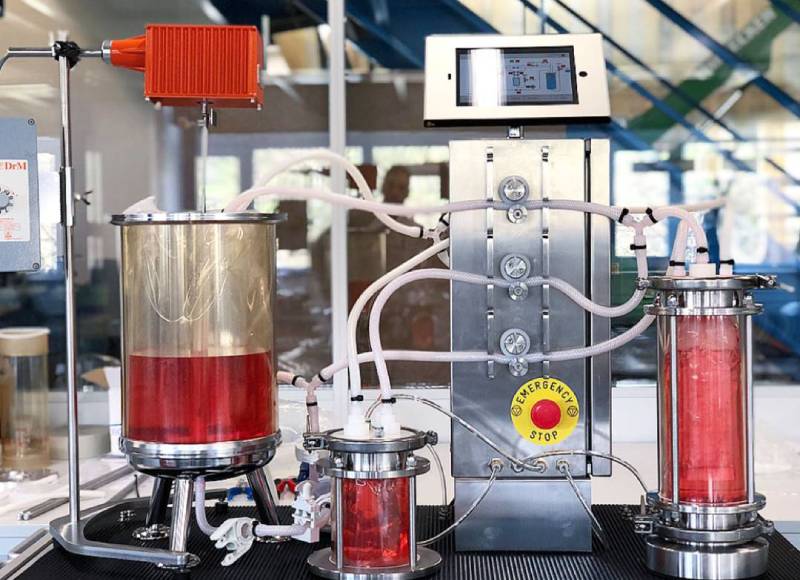“We at DrM figured out a novel multi-cycle filter solution for upstream microfiltration in biopharmaceutical processes, which extends the life of the filter bags and reduces cost significantly.”
The FUNDABAC® SU Filter
Common technologies employed in upstream cell harvesting include centrifugation, tangential-flow filtration, and depth filtration, often times coupled together in larger scale operations. This new concept in single-use filtration separates solids from suspension using dead-end filtration to deposit a cake. Flat filter elements are packed close together inside a multi-layered plastic bag enclosure to provide room for solid depositions up to 8 mm thick and to maximize surface area. The plastic bag is designed with multiple layers to be able to withstand chemical environments, undergo high pressures, and reduce gas permeation. The plastic filter bag is installed in a pressure vessel to allow the bag to be compressed via gas to dewater the cake. This enables filtration of the liquid heel so that there is virtually no hold-up left in the filter chamber. The filter elements are constructed in HDPE with an average pore size between 0.8 – 1 μm. These elements are flexible and conform to the shape of the bag when external pressure is applied. These elements are also back-washable via a back- flush tank which uses pressurized filtrate to discharge the deposited solids from the filter media and let them settle to the bottom of the filter bag. This enables the filter to perform multiple filtration cycles prior to disposal since solids can accumulate from cycle to cycle until the bag is full. Once full, the bag can be compressed to recover the hold-up volume, and the bag containing the solid waste can be removed and disposed of safely. In-situ filtration, cake washing, dewatering, and discharging provide a simple operation that reduces equipment costs and increases overall throughput.

Advantages of the multi-cycle SU filter
This compact design significantly reduces disposal volume per weight of waste generated. For cell harvesting in extracellular protein expression, the volume of the containment under the filter elements can be increased to handle very high cell loads. Due to the shape and size of cells, filtration normally takes place with the addition of diatomaceous earth and/or cellulose to improve flow rates. Under this normal cake filtration, cells undergo relatively lower shear stress versus other filtration technologies, ensuring the integrity of the cells are maintained and that intracellular impurities are not released into the product.
The CONTIBAC® SU Filter – enhancement to the new SU design
In some processes, the filtered cells need to be discharged as thickened suspensions to pump downstream. In intracellular protein expression, the spent media must be replaced with a buffer solution to remove undesired impurities before undergoing cell lysis. An enhancement to the new SU design under consideration here incorporates an opening at the bottom for slurry discharge. This significantly extends the lifetime of the filter bag and increases filtration capacity. After cells are harvested and washed with a buffer solution, the filter elements can be back-flushed to transfer the concentrated cells downstream to be lysed. Disrupting the cells releases the desired proteins into the buffer solution and the lysed broth is re-filtered to remove the cell debris, isolating the lysate containing the desired product to send downstream to purification.

In continuous bioprocessing of cells, the cultures require continual supply of media to optimize growing conditions, as well as continuous removal of metabolites and product to prevent a toxic environment. This process allows for high-density cultures that maximize productivity in small bioreactors and increase titer levels. This SU design offers a solution to retain the cells in a recirculating loop off the bioreactor, while separating and replacing the supernatant. Perfusion bioreactors can sustain cell cultures for several weeks, which requires a robust, continuous filtration technology to be able to handle the high cell loads while maintaining continuous high product output.



